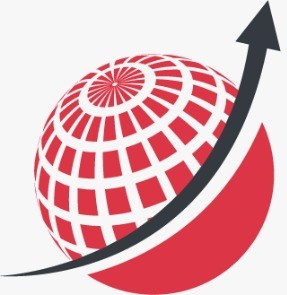Glass molding is a form of high-precision optical component processing intended to soften glass into a precise mold, under conditions of extreme heat and pressure without any oxygen. It’s a replicative process allowing the manufacture of high precision optical components without grinding and polishing – a process termed as ultra-precision glass pressing. There has been massive innovation in the precision glass molding market recently, particularly in volume manufacture. For example – the cycle time for an injection-molded 6 mm diameter plastic lens is around 30 seconds, while a comparable glass lens takes almost 15 minutes.
Flexibility and versatility trademarks of glass molded lenses
A key advantage provided by glass lenses over their mechanical counterparts is the cost efficiency in manufacturing complex lenses such as aspheres. Precision glass molding can easily produce micro-optic features along with adding limited integration. Glass molding is used to great effect in the consumer electronics and medical industry to manufacture digital camera lenses and medical products respectively. Precision glass molded lenses are now commonplace in high volume, low cost applications such as mobile lens assemblies, calling into question the belief that they will never be cheaper than plastic optics.
Request a sample copy of Global Glass Molding Market report @ https://www.crediblemarkets.com/sample-request/glass-molding-market-142289
Could COVID-19 make the chemical industry race ahead of the automotive sector?
The glass molding market is anticipated to grow considerably in the near term on account of the food & beverage and healthcare industry. There is an increased need for glass to manufacture durable and cost-efficient products in the 21st century. Demand for glass bottles is particularly high in the alcoholic beverage industry, directly benefiting the global glass molding market. In addition, glass is also the preferred option for non-alcoholic beverage packaging, as it is impermeable and nonporous. This minimizes the interaction between the beverage and the packaging – thereby retaining the flavor and aftertaste of the former. Another industry to keep an eye out for is the chemical industry. Glass molds are sought after in the production of lab equipment for R&D, coupled with the need for bottles to store various chemicals in laboratories.
Production cost must be brought down for competitiveness
Nonetheless, there are major challenges for the glass molding market that must be overcome with a significant barrier being cost. Precision glass molding is a highly complex interconnected procedure that includes mold manufacturing, molding, FEM stimulation, and coating. Furthermore, precision glass molding is a time and labor-intensive process. Lastly, product development times in the glass molding market are extended because the readily accessible product knowledge does not effectively harness data dependencies of processes along the long-established supply chain of glass molded products.
Spice jars, baby foods, and beverages – Demand from APAC triumphs other regions in the global glass molding market
The APAC region is projected to hold a commanding share of the worldwide glass molding market for the period 2016-2020 largely due to its massive population demanding a greater proportion of beverages – both alcoholic and non-alcoholic. The glass manufacturing industry is robust in East Asian countries such as Japan, Korea, and China, and is rapidly growing in South and Southeast Asia as well. Glass containers are also deployed in spice jars, baby food containers, and other types of foodstuffs.
There are several companies actively involved in the global glass molding market. Some of the major players profiled in this descriptive study are HOYA, AGC, Panasonic, Canon, Nikon, Kyocera, Alps, Asia Optical, CALIN, Lianchuang, Ricoh, LightPath, LANTE OPTICS and KINKO. Innovation is a necessity and not a luxury to survive in the glass molding market and organizations are adopting different strategies to strengthen their product portfolio and consolidate market share.
Buy this Report Now @ https://www.crediblemarkets.com/reports/purchase/glass-molding-market-142289?utf8=%E2%9C%93&license_type=single_user
Should companies worry about the three ‘u’s in an era of COVID-19?
Chinese manufacturing plays a critical role in both the digital camera and automotive industry. Therefore, any crisis such as COVID-19 that initially ground China to a halt before spreading its tentacles worldwide is bound to have a short-term impact on the global glass molding market. Many consumer digital imaging (DI) companies have all or some portion of their manufacturing in China. However, corporate executives are still uncertain of the long-term impact as of June 2020 as three words are oft repeated in interviews – ‘unknown’, ‘uncertain’, and ‘unclear’. The real concern will occur if Chinese customers who have fueled global growth stop buying digital cameras and cars over a longer duration. That said, the digital camera industry has proved remarkably resilient and bounced back after Japan’s devastating tsunami a decade ago so there is no reason to believe why this crisis should be any different.
KEY QUESTIONS ANSWERED IN THE REPORT
- What is the market size and growth rate of the global and regional markets by various segments?
- What is the market size and growth rate of the market for selective countries?
- Which region or sub-segment is expected to drive the market during the forecast period?
- What factors are anticipated to impact demand and supply trends in the market during the forecast period?
- What factors are likely to drive market revenue growth during the forecast period?
- What are the key technology and other trends shaping the market?
- What are the key opportunities in the market?
- What are some of the strategies implemented by key companies operating in the market?
- What is the COVID-19 impact on the market?
Browse Full Report @ https://www.crediblemarkets.com/market-analysis/glass-molding-market-142289






